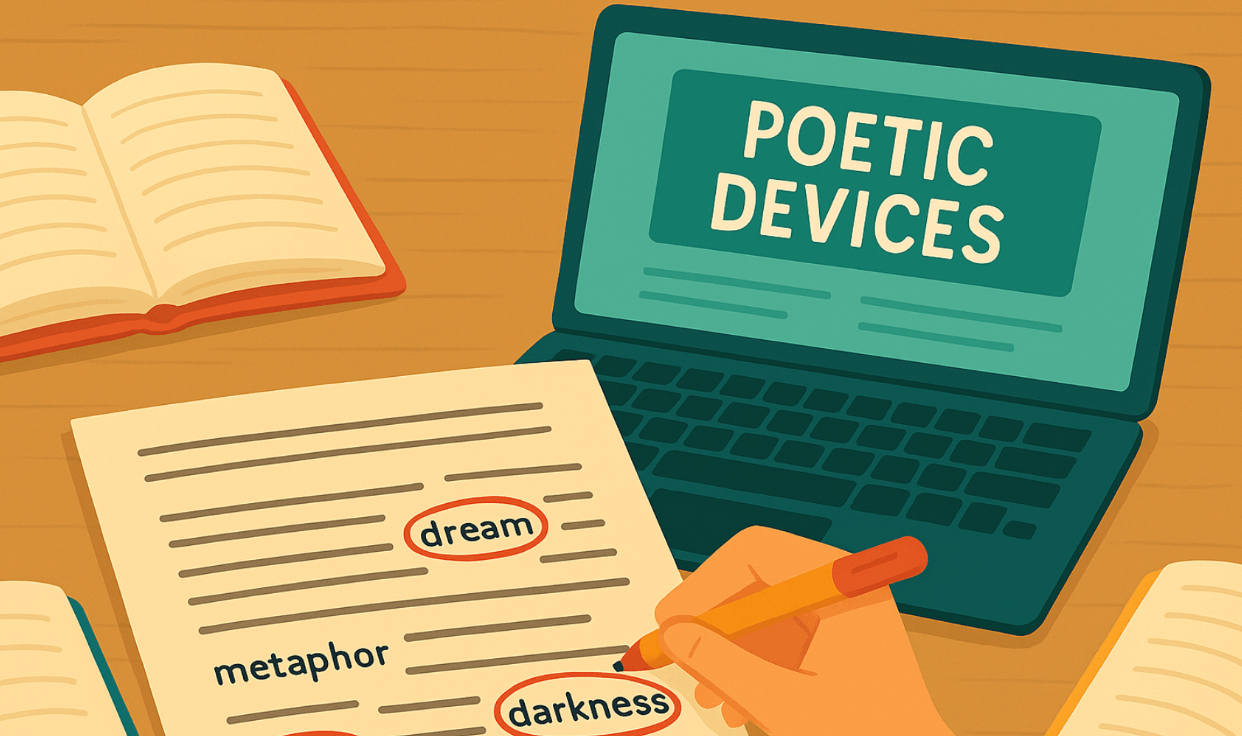Ah, the narrator—your story’s tour guide, gatekeeper of secrets, and occasionally, the mischievous prankster who flips the map upside down. Choosing between a reliable and unreliable narrator is a bit like choosing a travel companion. Do you want someone who hands you a clear itinerary? Or someone who makes you question whether you’re even on the right continent?
The narrator you choose plays a pivotal role in how readers experience your story. A reliable narrator is like that trustworthy friend who keeps everyone grounded, ensuring events are delivered with clarity and precision. On the flip side, an unreliable narrator is the storyteller who hands you rose-tinted glasses—or a blindfold—and then gleefully leaves you to sort out the truth from the fiction.
This choice isn’t just about storytelling; it’s about control. Are you the kind of writer who wants to earn readers’ trust or deliberately make them question everything? Both options have their strengths, and deciding between them isn’t about right or wrong—it’s about what works best for your story.
Throughout this article, we’ll explore what makes narrators reliable or unreliable, how each impacts the narrative, and how to choose the best fit for your plot. Plus, we’ll dive into famous examples (Gone Girl, anyone?) and offer tips to help you wield this literary device with finesse. So buckle up—whether your narrator is driving on a straight path or swerving wildly, we’re here to help you steer.
What Is an Unreliable Narrator?
An unreliable narrator is the literary equivalent of a magician. They wave one hand in front of your face while quietly pulling a rabbit—or a plot twist—out of a hat with the other. This type of narrator can’t (or won’t) give readers the whole truth, whether it’s because of mental instability, personal biases, or a deliberate intention to mislead. And let’s face it, unreliable narrators make stories so much fun—even if they leave readers shouting, “Wait, WHAT just happened?!”
Think of Edgar Allan Poe’s unnamed narrator in The Tell-Tale Heart. Here’s a guy insisting he’s sane while he’s obsessing over an old man’s “vulture eye” and hearing the incessant thumping of a nonexistent heart. His mental instability not only shapes the main character of the story but also creates a thick layer of suspense, leaving readers unsure of what’s real and what’s just in his unraveling mind.
Unreliable narrators are a powerful literary device. They allow writers to distort reality, plant clues, and challenge readers to piece together the “real” story. Take Amy Dunne from Gone Girl. Her narration is a masterclass in manipulation, as she intentionally deceives not just the other characters in the story, but the audience itself. One moment, you trust her. The next, you’re questioning everything you know about her—and maybe even yourself.
The beauty of an unreliable narrator lies in how they force readers to think critically, dig deeper, and come to their own conclusions. By withholding key information or presenting events through their skewed perspective and personal experiences, these narrators blur the line between truth and fiction, creating an unforgettable reading experience. When done well, unreliable narration can build tension, keep readers on edge, and make your story linger in their minds long after the final page.
So, if you’re looking to add layers of mystery, suspense, or even a touch of chaos to your story, an unreliable narrator might just be your secret weapon. Just be ready for your readers to question everything—including your sanity as a writer.
What Is a Reliable Narrator?
If an unreliable narrator is the wild card at the poker table, a reliable narrator is the dealer—calm, steady, and making sure everything runs smoothly. This type of narrator gives readers a solid foundation, presenting events with clarity and accuracy so the story unfolds without the constant need to second-guess what’s true. They’re the ones you trust to guide you through the chaos, offering a clear understanding of what’s happening, even when the story gets messy.
Reliable narrators act as the reader’s confidant, providing a perspective that feels grounded and authentic. Take Dr. Watson from Arthur Conan Doyle’s Sherlock Holmes series. As a reliable narrator, Watson not only documents Holmes’s brilliance but also serves as a relatable lens for readers. Sure, he doesn’t always understand Holmes’s deductions (who does?), but his honest, straightforward recounting makes him someone we can trust.
The key to a reliable narrator lies in their consistency and objectivity. They’re not here to mislead or confuse—quite the opposite. Reliable narrators help readers connect with the story’s world, offering a stable point of view that allows them to focus on the characters, plot, and deeper meanings without worrying about being tricked. They can also act as a moral compass, guiding and leading readers through the emotional highs and lows of the narrative.
But don’t mistake “reliable” for “boring.” A reliable narrator can still be deeply compelling, especially when their insights and observations bring depth to the story. Think Scout Finch in To Kill a Mockingbird. Her innocent yet perceptive voice as a child narrator allows readers to experience the complexities of racism and morality in a way that feels raw, honest, and unforgettable.
If your story demands credibility, a straightforward plot, or an emotional connection that hinges on trust, a reliable narrator is your go-to. They’re the sturdy anchor in the storm of storytelling, ensuring readers stay firmly tethered to the narrative—no tricks, no illusions, just the story as it unfolds. And honestly, sometimes we all need a little less chaos, right?
Reliable vs Unreliable Narrators: What’s the Difference?
Choosing between a reliable and unreliable narrator is like deciding between two very different tour guides for your story. One is the calm, organized guide with a clipboard, pointing out all the must-see landmarks in an orderly fashion. The other is a chaotic storyteller with a knack for leading you into dark alleys and whispering, “I swear this is the shortcut.” Both can be amazing, but the experience they deliver couldn’t be more different.
The Trust Factor: Who Do Readers Believe?
At their core, the difference between the two lies in trust. A reliable narrator invites readers to relax and immerse themselves in the story without worrying about what’s true. They present events in a straightforward manner, allowing the plot, characters, and themes to take center stage. Readers trust them to guide the narrative and focus on the bigger picture, not deciphering hidden motives.
Unreliable narrators, on the other hand, thrive on ambiguity and mystery. They deliberately blur the lines between reality and perception, making readers question not just the story but the narrator’s own motivations. This makes the reader an active participant in the storytelling, piecing together clues and drawing their own conclusions. It’s a more complex and interactive experience—but also one that can drive your audience deliciously mad.
How They Shape Plot and Reader Experience
When it comes to narrative voice, reliable narrators offer clarity and stability, while unreliable narrators inject an air of suspense and unpredictability. A reliable narrator might say, “Here’s exactly what happened,” while an unreliable one says, “Here’s what I think happened… but don’t quote me on that.” The emotional engagement differs too—readers often feel secure with a reliable narrator, but with an unreliable one, they’re constantly on edge, questioning every word.
Impact on the plot? Huge. Reliable narrators are like architects—they give structure, guiding readers through the narrative’s twists and turns without any detours. Unreliable narrators, on the other hand, are more like demolition experts. They reveal the story in pieces, sometimes shattering your expectations with shocking revelations (hello, Gone Girl). The choice between them shapes not only the story itself but also how readers perceive and connect with it.
So, how do you decide? Think about your story’s goals. If you want your audience to feel grounded, trust the narrator’s account, and focus on the plot or themes, go with a reliable narrator. But if your aim is to really create suspense and tension, add layers of complexity, or keep readers guessing until the very last page, an unreliable narrator might be your secret weapon.
In the end, it’s less about which is “better” and more about which one helps you tell your story in the most impactful way. Whether your narrator is the honest guide or the unpredictable wildcard, one thing’s for sure: they’re the bridge between your story and your readers—so choose wisely.
When to Use an Unreliable Narrator
Ah, the unreliable narrator—the literary wildcard that keeps readers on the edge of their seats, second-guessing everything they’ve read. But when is this crafty, unpredictable voice the right fit for your story? The answer lies in the type of experience you want to create for your readers.
Building Suspense and Creating Tension
If your story thrives on mystery, twists, and psychological tension, an unreliable narrator is your best friend. This type of narrator forces readers to constantly reevaluate what they know, adding layers of suspense that keep them hooked. Take Gone Girl as an example. Amy Dunne’s unreliability makes every chapter feel like a new puzzle piece, as readers sift through the lies and manipulations to uncover the truth.
The key to building suspense lies in how you reveal the narrator’s unreliability. Do you drop subtle hints early on, or do you hit readers with a shocking twist halfway through in the first person? Either way, the narrator’s distorted perspective keeps readers questioning, guessing, and completely immersed in the story.
Exploring Complex Characters and Themes
Unreliable narrators are perfect for exploring complex motivations, emotional states, and moral ambiguity. They allow you to dive deep into the psyche of characters who may not see the world as it is—or who may not want the world to see them as they are. Think of Poe’s The Tell-Tale Heart. The young man’s mental instability colors every word, creating a haunting exploration of guilt and paranoia.
This approach is also great for tackling themes like truth, perception, and reality. By presenting a skewed version of events, an unreliable narrator invites readers to question not just the story but the nature of storytelling itself. It’s a powerful way to add depth and provoke thought.
Genres That Love Unreliable Narrators
Certain genres practically beg for an unreliable character or narrator. Psychological thrillers, mysteries, and literary fiction are the obvious homes for this literary device. Whether it’s a detective withholding key details, a protagonist lost in their own delusions, or a character with hidden motives, these genres thrive on the tension and unpredictability that an unreliable narrator brings.
Tips for Writing an Unreliable Narrator
- Plant Clues Early: Let readers know something might be off, but don’t give it all away. A suspicious detail here, a contradictory statement there—it’s all about building intrigue.
- Make It Believable: Even the most unreliable narrator needs consistency. Their lies, biases, or delusions should feel authentic to their character and the story.
- Use Subtlety: Don’t slap readers in the face with “I’m lying!” Instead, let them discover the truth piece by piece. The journey is half the fun.
- Keep the Reveal Satisfying: Whether it’s a gradual realization or a jaw-dropping twist, ensure the moment readers figure out the narrator’s unreliability feels earned.
When used effectively, an unreliable narrator can transform a good story into an unforgettable one. They’re not just telling the story—they’re shaping the way readers experience it. If you want your audience to question everything, get invested in the mystery, and walk away thinking about your story long after they’ve finished it, the unreliable narrator might be exactly what you need. Just be prepared for the chaos—they’re nothing if not unpredictable!
When to Use a Reliable Narrator
Sometimes, readers just want a guide they can trust—someone who won’t mislead them or toss in plot twists just to watch them squirm. Enter the reliable narrator, the steady hand on the wheel of your story. But when is this trustworthy type the right fit for your tale? Let’s explore.
Providing Clarity in Complex Stories
If your story involves intricate plots, sprawling casts of characters, or richly detailed worlds, a reliable narrator is your MVP. Readers rely on this narrator to keep things clear, so they can focus on the story’s depth without getting lost in confusion. Think of Dr. Watson in Sherlock Holmes. His consistent, grounded perspective is the perfect counterbalance to Holmes’s eccentric brilliance. Without Watson, we’d all be scratching our heads trying to keep up.
Here’s a stat to consider: according to a study by the University of Nebraska, 79% of readers prefer narrators they perceive as trustworthy when reading genres like historical fiction or romance. Why? These genres often focus on emotional depth and realism, and a reliable narrator helps reinforce that connection. If your story needs readers to feel emotionally anchored, a reliable narrator can make all the difference.
Grounding Emotional Stories
Reliable narrators shine when your story deals with personal growth, relationships, or moral lessons. They help readers connect with the heart of the narrative by presenting events in a straightforward and honest way. Scout Finch in To Kill a Mockingbird is a classic example. Her innocent, trustworthy voice draws readers into a story about injustice and humanity, making the themes resonate more deeply.
Here’s the thing: not all drama needs deceit. Sometimes, the best tension comes from the plot itself, not from questioning whether the narrator is playing mind games. Reliable narrators are there to let the characters and events shine without distraction.
Genres That Thrive on Reliable Narrators
Certain genres lean heavily on reliable narrators, and for good reason. Historical fiction, adventure stories, and romance novels often benefit from a narrator who plays it straight. Readers of these genres want to feel immersed in the world and trust the narrator’s account of events. If your story is about grand adventures or emotional journeys, you want a narrator who feels like a solid anchor in the storm.
Tips for Writing a Reliable Narrator
- Be Consistent: Reliable narrators don’t flip-flop. Make sure their tone, voice, and perspective remain steady throughout the story.
- Let the Story Speak: A reliable narrator’s job is to guide, not overshadow. Their role is to illuminate the plot and characters, not steal the spotlight.
- Build Trust Early: Show readers that your narrator is dependable right from the start. Honest observations and a clear perspective go a long way in establishing credibility.
- Don’t Sacrifice Depth: Reliable doesn’t mean boring. Use their insights to add emotional depth and provide a window into the story’s world.
When Reliability Wins
While unreliable narrators can create thrilling stories, sometimes readers crave stability. If your story demands emotional resonance, clarity, or a straightforward plot, a reliable narrator is the right choice. They let readers immerse themselves in the world you’ve built without second-guessing every word.
So, if you’re working on a romance with emotional stakes or an epic adventure that requires precision in world-building, a reliable narrator is your best bet. They may not be flashy, but they’re the dependable engine driving your story forward—and trust me, your readers will thank you for it.
Combining Reliable and Unreliable Narrators
Why choose one when you can have both? Sometimes, the most compelling stories use a mix of reliable and unreliable narrators, creating a dynamic interplay that keeps readers intrigued and on their toes. It’s like having both a GPS and a friend with questionable directions in the passenger seat—one gives you the facts, and the other… well, keeps things interesting.
Why Combine the Two?
Using both reliable and unreliable narrators can add layers of complexity to your story. A reliable narrator establishes a sense of trust, grounding readers in the narrative, while an unreliable narrator spices things up by introducing ambiguity, suspense, and twists. The contrast between the two creates a narrative tension that’s hard to resist.
Take Emily Brontë’s Wuthering Heights. The story alternates between the reliable narration of Mr. Lockwood and the more emotionally charged (and possibly biased) account of Nelly Dean. This dual approach allows readers to see the same events from different perspectives, forcing them to piece together the truth for themselves. It’s a literary tug-of-war that makes the story all the more engaging.
How It Impacts Readers
Combining reliable and unreliable narrators offers a unique reading experience. Reliable narrators provide a foundation—they’re the steady frame of reference readers can return to when the story gets wild. Meanwhile, unreliable narrators challenge perceptions, encouraging readers to question motives, dig deeper, and come to their own conclusions. This interplay keeps readers actively engaged and invested in the story.
According to a 2021 reader engagement survey by Goodreads, 62% of readers find stories with multiple narrators more engaging, particularly when they offer contrasting perspectives. By mixing reader-reliable narrators and unreliable voices, you can tap into a reader’s preference while adding depth to your narrative.
Tips for Balancing the Two
- Define Their Roles Clearly: Decide early on which narrator will serve as the “anchor” (reliable) and which one will introduce doubt (unreliable).
- Use Transitions Wisely: Make it clear when the narrative switches perspectives to avoid confusing readers. Subtle changes in tone or style can signal the shift.
- Leverage the Contrast: Highlight the differences between the narrators to keep readers intrigued. Let the reliable narrator focus on clarity and facts, while the unreliable one adds emotional depth and ambiguity.
- Plant Clues: Give readers subtle hints about the unreliable narrator’s motives or biases without making it too obvious. It’s the small cracks in the façade that make the narrative so compelling.
Famous Examples
Many beloved stories successfully blend reliable and unreliable narrators. In Agatha Christie’s The Murder of Roger Ackroyd, the reliable structure of a classic whodunit is shaken by the shocking revelation of an unreliable narrator, creating one of the most memorable twists in mystery fiction. Similarly, in Life of Pi by Yann Martel, the story progresses as the narrator shifts between a seemingly reliable account and one that leaves readers questioning reality itself.
When to Use Both
If your story involves complex themes, moral ambiguity, or multiple layers of truth, combining reliable and unreliable narrators can elevate it to a new level. It’s especially effective in genres like mysteries, psychological thrillers, and literary fiction, where differing perspectives add richness and depth.
By this literary technique of blending the stability of a reliable narrator with the intrigue of an unreliable one, you can create a narrative that’s equally captivating and thought-provoking. It’s a literary power move, giving readers the best of both worlds—and keeping them hooked until the very last page.
Tips for Writing Reliable and Unreliable Narrators
Crafting a narrator is like assembling the engine of your story—it needs to work seamlessly, whether it’s running smoothly (reliable) or sputtering unpredictably (unreliable). The key is to balance believability and intrigue, ensuring your narrator—reliable or not—serves the story effectively. Here’s how to do it, with a touch of humor and a lot of practical advice.
Tips for Writing a Reliable Narrator
- Be Consistent: A reliable narrator should be as steady as your favorite coffee order. They don’t randomly change their tone, opinion, or perspective. Keep their voice grounded and trustworthy from start to finish.
- Add Depth Without Drama: Reliable doesn’t mean boring. Use their observations to add richness to your world and characters. Think of them as the steady lens through which readers experience the story.
- Build Trust Early: From page one, make readers feel like they’re in good hands. Honest descriptions, logical insights, and a transparent tone go a long way in building credibility.
- Use Their Voice to Ground the Plot: A reliable narrator is your chance to clarify timelines, events, and relationships without overwhelming the reader. They’re the glue that holds your story together.
Tips for Writing an Unreliable Narrator
- Play With Subtle Clues: Unreliable narrators work best when their unreliability sneaks up on readers. Drop small inconsistencies or odd details that make readers go, “Wait, what?” but don’t overdo it—leave some mystery.
- Give Them Strong Motivations: Whether they’re lying to protect themselves, grappling with delusions, or simply manipulative, their reasons for distorting the truth should be compelling and believable.
- Leverage Emotional States: Use their emotions—fear, anger, guilt, or even overconfidence—to distort their perception of reality. A narrator who’s deeply emotional feels human, even if they’re unreliable.
- Make the Reveal Worth It: Whether readers figure it out slowly or get hit with a jaw-dropping twist, the moment they realize the narrator’s unreliability should feel earned. Build up to it carefully.
- Balance Truth and Lies: Let your unreliable narrator sprinkle in enough truth to keep readers guessing. A good unreliable narrator doesn’t just lie—they distort, withhold, and manipulate, all while giving readers just enough to stay intrigued.
Experiment With Your Own Writing
Whether you’re writing a steady, reliable narrator or a delightfully deceptive one, don’t be afraid to experiment. Test their voice, motivations, and perspective in different scenarios to see what works best for your story. Reliable narrators can be the backbone of a story, while unreliable narrators inject excitement, tension, and depth. Play with both to find the perfect fit.
Remember, at the end of the day, your narrator is the bridge between your story and your readers. Whether they’re trustworthy or full of surprises, make sure their narrative voice throughout is strong, consistent, and serves the narrative because a good narrator—reliable or not—can turn a good story into a great one. Now, go forth and make your narrators unforgettable!
Writing Reliable vs. Unreliable Narrators: Which Narrator Will You Choose?
When it comes to choosing between a reliable or unreliable narrator, there’s no one-size-fits-all answer—only what fits your story best. A reliable narrator offers clarity, trust, and emotional grounding, while an unreliable narrator injects suspense, complexity, and twists that leave readers guessing. And if you’re feeling adventurous, why not combine the two for a narrative that’s as dynamic as it is unforgettable?
At the end of the day, your narrator is your story’s voice, the bridge between your world and your readers. Whether they tell the whole truth or carefully weave in lies, make sure their voice resonates, intrigues, and keeps readers turning the page. So go ahead—choose wisely, write boldly, and create a story your audience will never forget.
Ready to bring your narrator to life and craft a story that captivates readers? At Spines, we provide the tools, resources, and support to help authors like you publish with confidence. Whether you’re writing with clarity or weaving in twists, we’re here to make your publishing journey seamless. Visit Spines.com today and let’s get your story out into the world!







